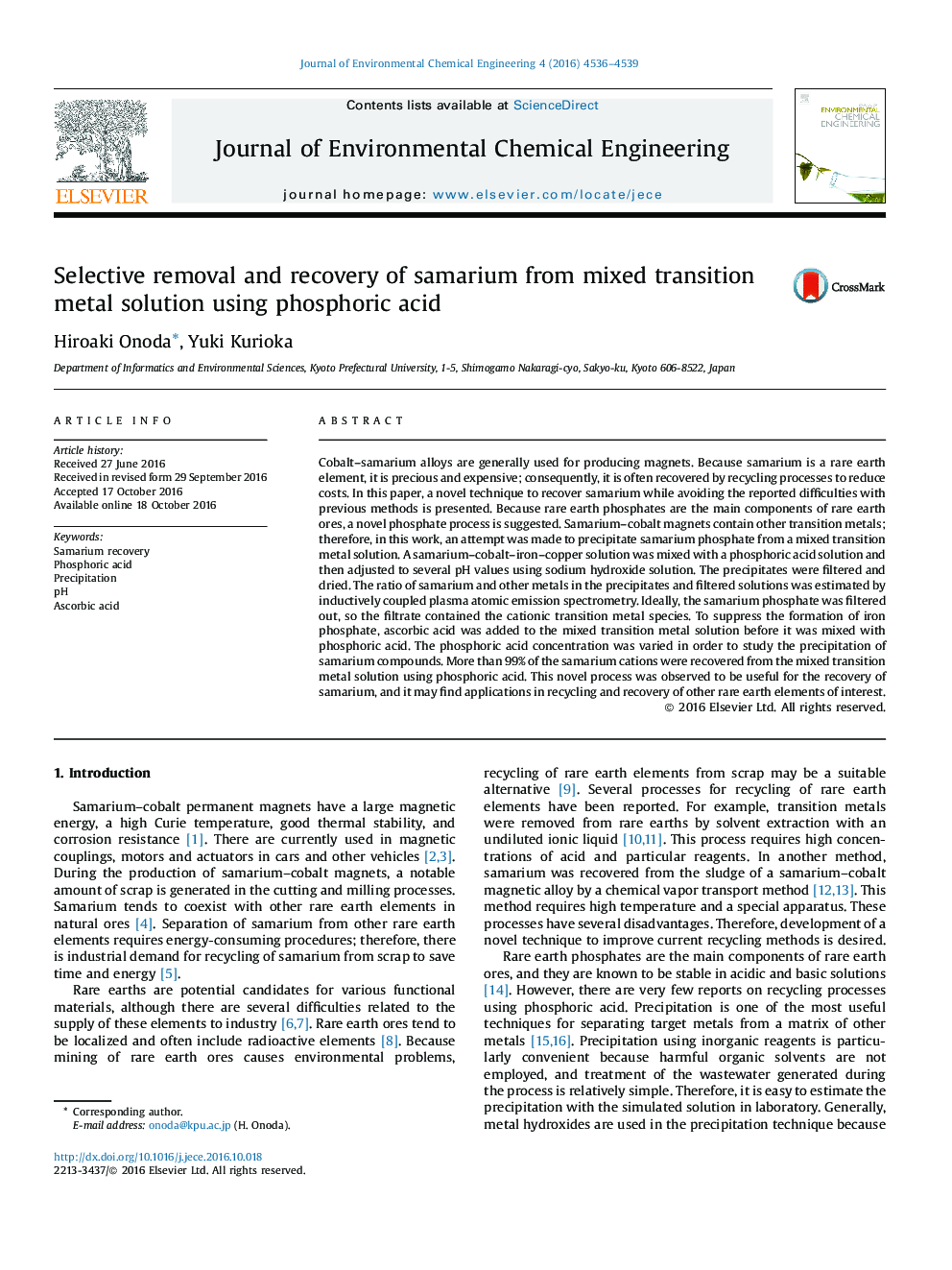| Article ID | Journal | Published Year | Pages | File Type |
|---|---|---|---|---|
| 4908626 | Journal of Environmental Chemical Engineering | 2016 | 4 Pages |
Abstract
Cobalt-samarium alloys are generally used for producing magnets. Because samarium is a rare earth element, it is precious and expensive; consequently, it is often recovered by recycling processes to reduce costs. In this paper, a novel technique to recover samarium while avoiding the reported difficulties with previous methods is presented. Because rare earth phosphates are the main components of rare earth ores, a novel phosphate process is suggested. Samarium-cobalt magnets contain other transition metals; therefore, in this work, an attempt was made to precipitate samarium phosphate from a mixed transition metal solution. A samarium-cobalt-iron-copper solution was mixed with a phosphoric acid solution and then adjusted to several pH values using sodium hydroxide solution. The precipitates were filtered and dried. The ratio of samarium and other metals in the precipitates and filtered solutions was estimated by inductively coupled plasma atomic emission spectrometry. Ideally, the samarium phosphate was filtered out, so the filtrate contained the cationic transition metal species. To suppress the formation of iron phosphate, ascorbic acid was added to the mixed transition metal solution before it was mixed with phosphoric acid. The phosphoric acid concentration was varied in order to study the precipitation of samarium compounds. More than 99% of the samarium cations were recovered from the mixed transition metal solution using phosphoric acid. This novel process was observed to be useful for the recovery of samarium, and it may find applications in recycling and recovery of other rare earth elements of interest.
Related Topics
Physical Sciences and Engineering
Chemical Engineering
Chemical Engineering (General)
Authors
Hiroaki Onoda, Yuki Kurioka,
